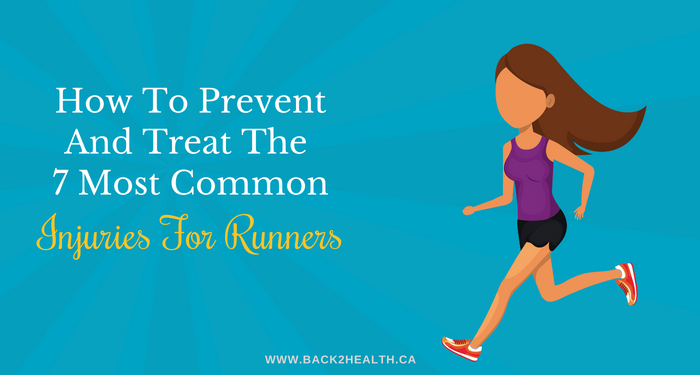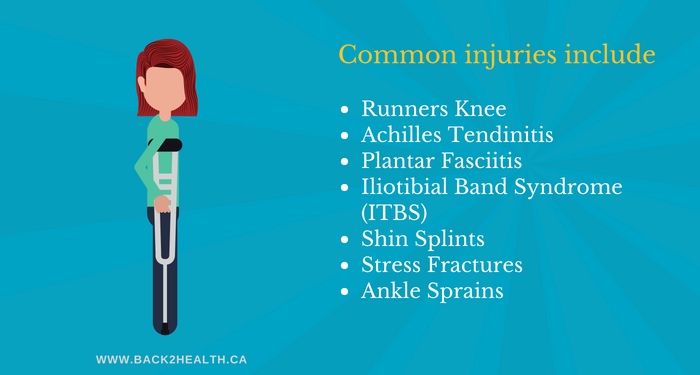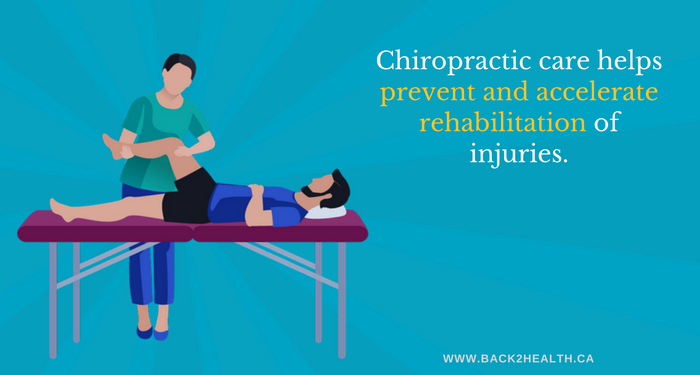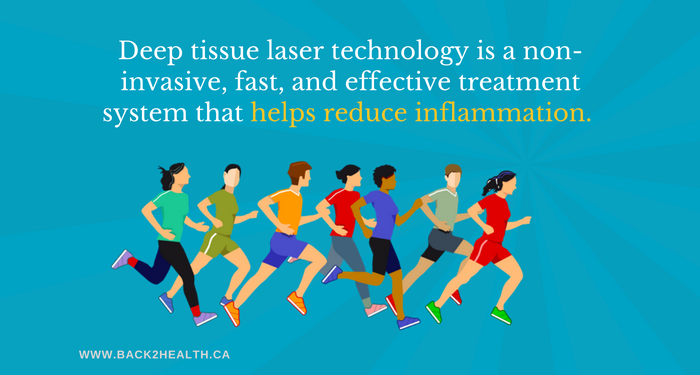And if you haven't, then sadly it’s likely you'll probably suffer one in the near future.
According to Stephen Messier, the director of the J. B. Snow Biomechanics Laboratory at Wake Forest University, 79% of all runners get injured each year. If these calculations are accurate, that means that four out of five runners reading this article will suffer some sort of sprain, tear, or ache in the next 12 months!
Even though injuries are incredibly common amongst runners, the silver lining is many of them can be prevented. By understanding how the most common injuries occur, with a little preventative care and proper treatment, you can help decrease the quantity and severity of injuries you will suffer as a runner.
Here are the seven most common running injuries:
1. Runner's Knee
Experts have recently determined that muscle imbalances and weak hips can put extra stress on the kneecap, increasing the chances of suffering from this painful condition.
Runner's knee can affect one or both knee caps. According to the British Journal of Sports Medicine, twice as many women are affected than men. This is because women have wider hips, which can negatively affect their stride.
You may be suffering from Runner's Knee if you have persistent pain in your knee, and/or you can hear cracking or popping when you move your knee joint.
2. Achilles Tendinitis
If you are feeling aches or pains just above your ankle in the back of the leg, you could have Achilles Tendinitis. It is common in runners who have increased their training intensity and duration over a short period of time.
If you are planning to tackle a long race, it's important to increase your runs gradually and have a good recovery strategy in order to avoid Achilles Tendinitis.
3. Plantar Fasciitis
This foot pain in runners comes from:
- Long periods on your feet, whether at work or running.
- Unsupportive, ill-fitting, or worn out footwear.
- Having feet that roll in (over-pronate) excessively when you walk or run.
- Tight calf muscles or stiff Achilles tendons.
Symptoms include sharp, stabbing pain at the bottom of your feet when you wake up and take your first few steps. The pain usually improves as you get moving throughout the day, but can worsen after more intense physical activity like climbing stairs or going on runs.
4. Iliotibial Band Syndrome (ITBS)
When the IT Band has been sufficiently irritated, the pain from inflammation can be intense enough to force you to stop running for quite a while.
ITBS is caused primarily by:
- Poor shoes.
- Increased mileage.
- Running downhill or on unstable surfaces.
- Weak or imbalanced hips and pelvis.
5. Shin Splints
While not all shin pain is necessarily shin splints, you may have them if you experience increased pain along the front of your lower leg whenever you run longer distances, or when you flex your foot upwards (dorsi-flex). Pay particular attention if your lower legs appear swollen and sensitive to touch.
6. Stress Fractures
The most common stress fractures include the:
- Tibia - the bigger shin bone.
- Femur - the bone between your hip and your knee.
- Metatarsal bones in the foot.
- The navicular bone in the mid-foot.
- Fibula - the one on the outside of your lower leg.
Poor calcium intake, bad shoes, and overdoing with mileage all contribute to these tiny fractures. If you have a stress fracture, it will often feel like nothing you can do will help, except maybe for extended rest from any weight-bearing exercise.
7. Ankle Sprains
Ankle sprains will typically result in intense pain and swelling that can take several weeks to return to normal.
Running on uneven surfaces and wearing unsupportive footwear can increase the chances of rolling our ankles.
Injury Prevention
- Purchasing high quality shoes.
- Using protective gear such as knee or ankle braces (especially to prevent re-injury).
- Running on smooth, flat surfaces.
- Easing into new workout routines and gradually adding more distance or greater intensity to the training sessions.
- Stretching the most important running muscles before and after training sessions.
- Regular foam rolling of tight, sore muscles.
In addition, runners wanting to avoid injuries should consider chiropractic care as a viable option for injury prevention. Chiropractors assess your body for imbalances, and use treatment methods that can help to accelerate the rehabilitation of the injuries mentioned above.
Regularly visiting a chiropractor can assist you in three important ways:
1. Proper Alignment
Regular chiropractic adjustments help keep the spine and hips aligned, which makes sure your knees, legs, and general gait are aligned too.
2. Increased Range Of Motion
Regular chiropractic care helps you loosen and relax your joints and muscles, which in turn allows for greater flexibility and movement. This will smooth out your gait patterns and decrease the likelihood that you experience any of the most common running injuries.
3. Decreases Tension
The nervous system, in turn, regulates the function of the entire musculoskeletal system. So, with a relaxed, functional nervous system, you will better be able to keep your body in prime running condition and resistant to injury.
In addition, if you end up dealing with an injury, chiropractic care can often boost your healing time and get you back out on the track much sooner than you would be otherwise.
Treating Running Injuries
Your first option should always be to go to the emergency room if the pain is unbearable or you believe you have broken a bone, or torn any muscle/ligament.
On the other hand, if you are suffering from an ache or nagging pain, you should visit a chiropractor as soon as possible -- because recovery times are often accelerated the sooner care is initiated. While treatment is still effective no matter when it is incorporated, every athlete I know would prefer to return to their activities sooner, rather than later.
A chiropractor will help diagnose your injury and create an effective treatment plan that will get you back on your feet as soon as possible.
If your injury is caused by running-related inflammation, such as achilles tendinitis, plantar fasciitis and ITBS, there's a good chance that your treatment plan would also greatly benefit from deep tissue laser therapy.
To maximize your own personal contribution, in order to have the speediest recovery possible, be sure to avoid The 7 Most Common Mistakes People Make When They're Injured.
Can Deep Tissue Laser Therapy Help Treat Running Injuries?
Deep tissue laser therapy is a scientifically proven treatment system, also known as a Class IV laser, which targets damaged cells and tissues, activating the body’s own analgesic and inflammatory mechanisms to help combat the injury.
The psychological effects this can offer to the patient cannot be overstated: when a patient is discouraged, healing and recovery is often delayed; conversely, when a patient is encouraged, the healing cascade is amplified and reinforced, shortening recovery times.
Laser therapy presents a great option for people looking for a drug-free, non-invasive treatment option for injuries. Class IV therapy lasers are more effective than other lasers for treating pain and inflammation because they are the highest intensity laser available, delivering larger doses of healing energy in shorter treatment times.
Put Laser Therapy on Your Treatment Roster
If you are a runner and would like to talk further about injury prevention and treatment, book a consultation with our chiropractor today. Your aching muscles and joints will thank you.





 RSS Feed
RSS Feed
